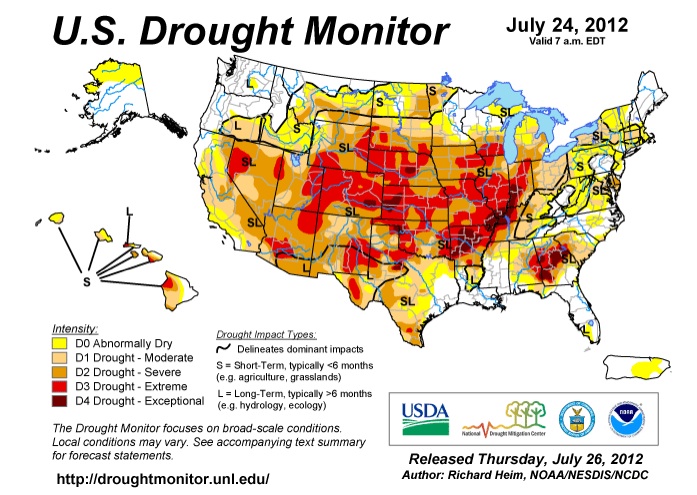 |
| Photo: Hoosier Ag Today |
Yesterday the New York Times published a column by Mark Hertsgaard titled "Harvesting a Climate Disaster." Hertsgaard's column is about the farm bill acting as the United States' de facto climate bill and in their current forms, both the Senate and House versions of the legislation are "a
disaster waiting to happen."
Hertsgaard sites the summer of 2012's extreme weather from the hottest July on record to the worst drought in 50 years. Either bill will accelerate global warming by encouraging green house gas emissions and will make farms more vulnerable to the impacts of climate
change.
Hertsgaard goes on to explain that by some estimates, agriculture accounts for one third of global emissions. America’s industrial agriculture system (especially meat production), and dependency on fertilizers contribute a great deal to those emissions. Fertilizers contain nitrous oxide, a greenhouse gas that is 298 times more potent than CO2 over a century. Both farm bills continue to subsidize commodity crops and encourage high yield, environmentally degrading, agriculture. Hertsgaard writes that climate change resilience can be achieved with improved soil fertility which causes higher soil water retention. This means farmers must cut back on chemical fertilizers that kill the microorganisms which ventilate soil.
This concept of climate change and agricultural resilience and adaptation is the central theme of CT NOFA's 2013 Winter Conference on March 2 at Wilton High School. Our keynote speaker, David W. Wolfe from Cornell University is an expert on project climate change for the Northeast and adaptation. Read about his presentation at an "Inside Cornell" luncheon last year on the Cornell Chronical website and watch it here.
Always food for thought (or thought for food),
Kristiane
Always food for thought (or thought for food),
Kristiane


Thanks for the great article. Really very informative posting which provide lots of informative in all the regards. Thanks for the wonderful posting. The topic which you have discussed in your blog is very informative. Life insurance comparison quotes
ReplyDelete